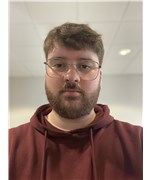
Comparative Analysis of Neural Radiance Field Approaches
Project Abstract
Neural Radiance Fields have revolutionised the fidelity and interactivity of digital scenes generated from two dimensional images. Powered by recent advancements in machine learning, they allow the generation of new viewpoints of a scene from a select number of input photos. This project explored the number of methodologies used to create NeRF models and compares them based on their quality and performance.The analysis focuses on a select set of NeRF implementations gathered from recent publications. My main aim is to provide a document outlining not just the top performing models, but why. Why are they producing better looking results? Why are they generating images hundreds of times faster than previous implementations? This will all be explored in my project.As well as comparing the innovative approaches to neural radiance field designs, I will be implementing my own one. My secondary goal for the project is to create a NeRF of the Computational Foundry inside Swansea Universities Bay Campus. To house this NeRF I aim to create an original model, one based upon the findings of my analysis. My hope is that I can improve upon the reviewed implementations in at least one metric.I hope that I have piqued your interest and that if you didn’t already know what Neural Radiance Fields are, you’re left with enough intrigue to do a little research of your own. Although my comparative analysis isn’t yet completed, there’s plenty of information online for you to sink your teeth into and scratch that itch for computer vision and machine learning.
Keywords: Machine Learning, Neural Networks, Neural Radiance Field
Conference Details
Session: Presentation Stream 32 at Presentation Slot 5
Location: GH037 at Wednesday 8th 13:30 – 17:00
Markers: Thomas Reitmaier, Raziyeh Moghaddas (GTA)
Course: MSc Data Science, Masters PG
Future Plans: I’m looking for work
